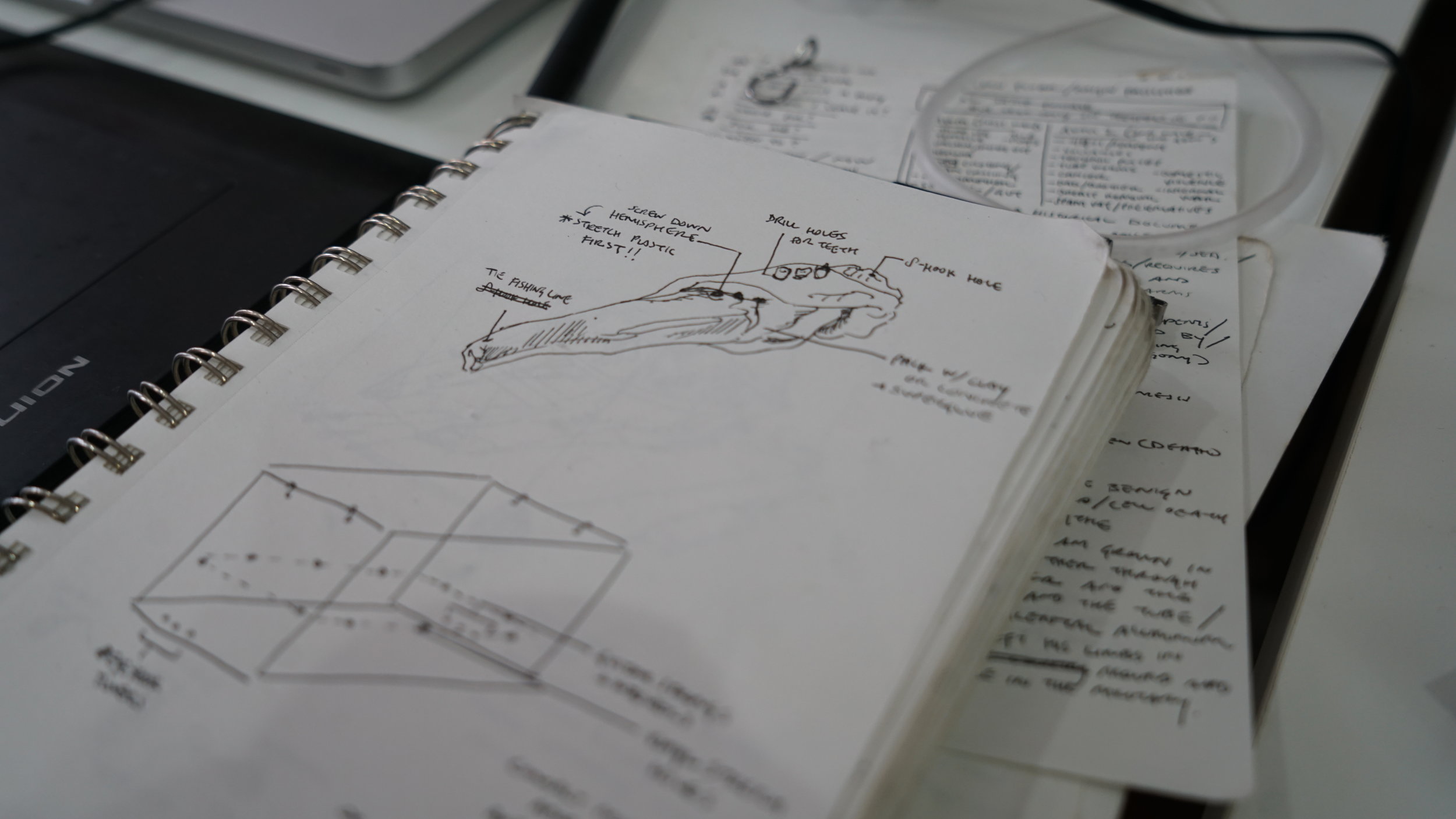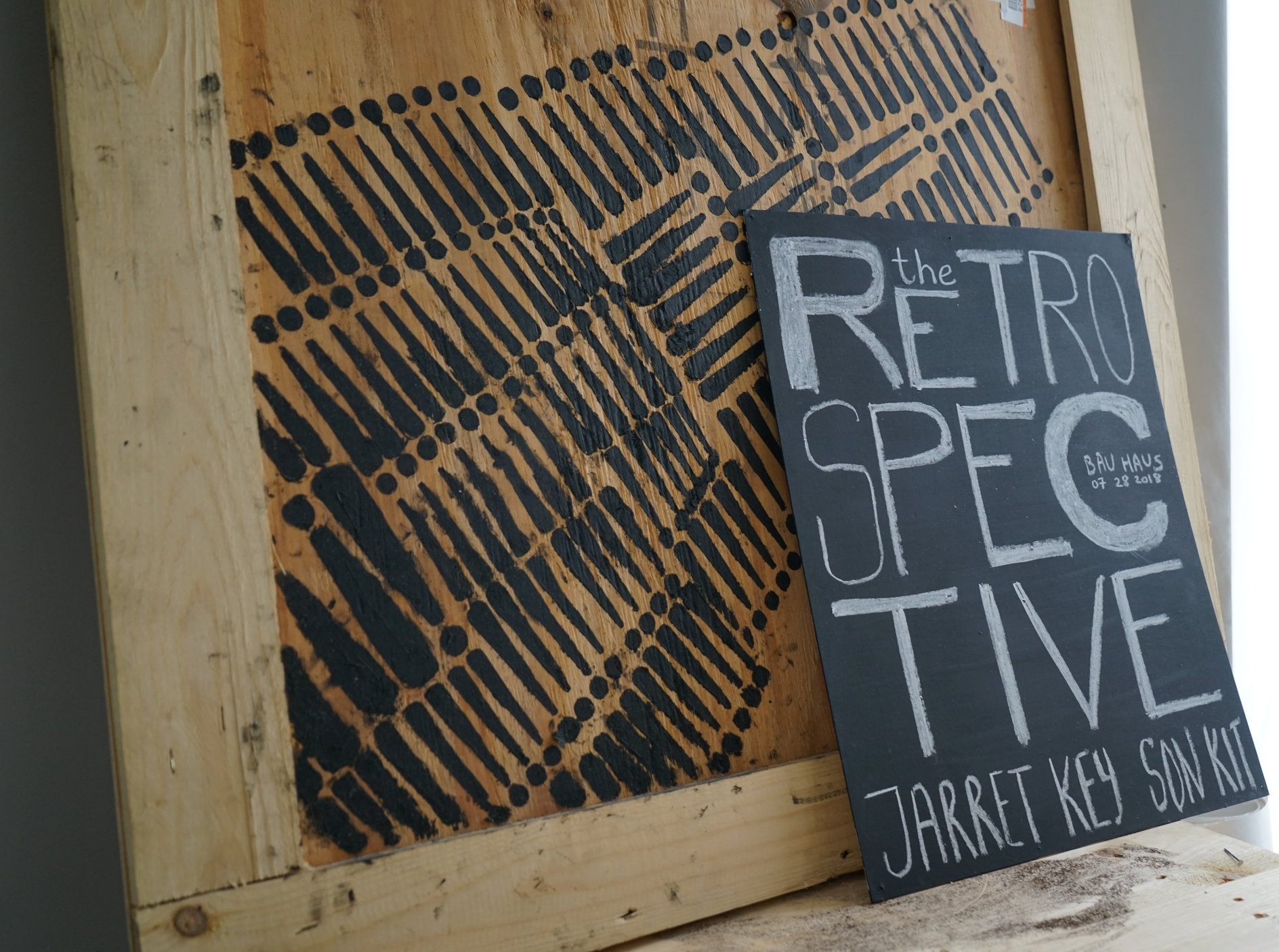[SYC Artist #1] Kit Son
Q. Could you tell us a little about yourself?
A. I have been in New York for 5 years as an artist. I work primarily in video installations, illustration, text, and sculpture. For the last couple of years, my art has been centered around depicting a futuristic sci-fi world, set completely underwater, and imagining how humans would survive in such an environment. That’s part of what I like to call a new canon of Korean American science fiction authored entirely by me. I’m originally from LA and I will going to grad school in Providence, Rhode Island soon.
Q. How was your first trip to Korea in 2016 and how did affect your work?
For me, Korea meant not having my face questioned and not having my Asian-ness questioned. But going back to Korea, I experienced and realized that I am also different in Korea. When I speak Korean, people would still answer back in English. So I started thinking a lot more about how my Korean-ness and how my relationship to the Korean nationality/ethnicity has to be addressed. I'm a foreigner in the US and I am also a foreigner in Korea. So where am I not going to be a foreigner? Where do I belong? Where can I call home? Out of sheer frustration, I looked up the exact latitude and longitude of the midpoint between Seoul, New York and LA. It landed me in the middle of the Pacific Ocean. This concept launched me into this whole series of work where it's about underwater survival, which came from me trying to figure out my place. And I think these feelings of displacement or not knowing where you belong are so common to everybody.
Q. In Let us Usher in a New Heyday of Building a sports bar in the Revolutionary Spirit of, why did you decided to use a Korean mythology in your work?
A. I landed there because I was thinking a lot about anthropomorphism. I was thinking about what it means to be human, what it means to be seen as human, and what it means to be treated as human. There is a phrase that has been going around, “Proximity to Whiteness.” It means that East Asians occupy space in American racial politics, where we are very close to having the full privileges that white Americans enjoy, but it’s super conditional. You have to fulfill certain conditions to tap into all those benefits. For the “Tiger and the Bear” myth, this was an important symbol for me, because it's about the desire to become human. Why did humans make a world where the conditions for being a bear or a tiger are so awful that they would want to be human? I try to straddle that line of cognition. The art piece shows the transformative moment of agony instead of showing the actual transformation itself. That moment is the crux of it. This is why I dove into this particular myth because I wanted to see where that intersection of self-determination of Korea and animal-ness intersected.
Q. Korean Mukbang is often an exotic and eccentric culture to foreign eyes. What inspired you(them) to create a work appropriating Mukbang video?
A. I'm fascinated with food as a cultural marker. It's also the first sign of the alien or the outsider in a lot of sci-fi movies, like one of the first symbols that the director will use to show you that this person is different and he/she may not be a person. Mukbang showed it for the first while I was trying to figure out my thoughts about food as a cultural marker, this specific food-spectator phenomenon in Korea. I way trying to google instances of sci-fi foods and the thing that kept popping up was the old boy when he’s eating octopus. But that was not a sci-fi food. People are actually acting octopus in a similar way in Korea. So, the reason why I include snow pierce and old body is to show the ways that the level of displacement is aided by the internet. Sci-fi food is the marker of the alien. If Korean food is seen as sci-fi food, does that make Koreans alien?
Q. In the Anthropiscine War Machine to North American Front, what made you use Budaejigae, a cultural food culmination born from Korean & American ingredients, as a subject in your art? Also, how do you feel about the globalization and culture integration in food?
A. War changes conditions fundamentally. So with the Budaejigae maker in my work, I wanted to take this very potent symbol of wartime. So how do we live in this world where a war waged by climate change has fundamentally changed our condition of life? That's a question. Budaejiage is a symbolic army dish. It came out of the Korean War. I used that subject specifically because I think about war and conflict in general as a running theme in my work. But then also thinking about the ways that war affects our lives.
I think the prevailing idea about globalization is that it emanates directly from privileged Western centers out to the rest of the world. Food is changing all those dynamics. I think that has to do with the way that food is dispersed and what's considered good food. I think it's ironic that Chinese food is still considered cheap when China is becoming such a global power and I wonder how that's going to change.
Q.Is your work a reflection of the current or future society?
A. I work in a post-apocalyptic framework because after the apocalypse is kind of where we can rebuild and start with whatever vocabulary you have and add a few words to it. For me that becomes a playground that becomes a space of possibility. The reason why my works can be read as darker or pessimistic is because I'm trying to be as real as possible about those conditions.
Q. How did your transition from video works to installation happened?
A. Once I got to a place where I could establish the rules of my own mythology, that’s when I think I start to moving more into installation. Obviously, all of that came from thinking about that as an allegory for diaspora, for being Korean diaspora. I think Korean elements still exists in the way that I think about the different elements about the world but less obvious. That mirrors my relationship with figuring how I fit into Korean identity. It’s definitely something that I have stepped away from as I’ve gotten deeper and deeper into this future worlds this climate change worlds.
Q. In to know a chimaeric greeting by the ringing in your bones, what is the underwater element in this work?
A. The timeline of chimaeric is where it's so far in the future that it's just museums are now looking back at fossils, except the fossils are of the next species that comes after humans. I created hypothetical museum pieces of the fossil record or dioramas that could be shown at the Museum to explain these weird species that happened after Homo sapiens. With chimaeric greeting, this one is kind of a more specific version of that past piece. chimaeric greeting is focusing specifically on jaw structure on vocal cords on audio communication – the working method of physiological changes in jaw structure, and persistence of communication.
Q. Do you think there is a physical or mental aspect of human traits that we need to evolve from?
A. I think it's already happening whether we want it to or not; whether it's good Evolution or bad Evolution. For example, I was reading studies on an article about transgenerational trauma; scientists are finding that some traumas are so severe that it fundamentally changes your DNA and passed on to your kids and future generations. This affects people who are refugees of war like from the Holocaust or Syrian civil War. I think responses to trauma or responses to past history are ways in which we as biological creatures have figured out how to evolve in real time in a miniscule way but yeah in a way. They are changing us, maybe not on the species level but on an individual level.
Q. Why are you not using the word “identity?”
A. I wasn’t doing that on purpose necessarily. I think the way that the term is used limits the way it’s viewed. Currently I don’t like the way that the word “IDENTITY” is marketed. I also think there’s very limited vocabulary that you’re allowed to talk in when you make identity art. For example, any time you tried to talk about any social issues that weren't universal to white people, people thought that you made work for Asians. You just make work for black people. I think there’s definite elements to work that is about queerness where you can talk about it more than the queerness. There’s other ways to talk about it and yet no matter how different the work looks, if it’s made by queer person of if there’s something about queerness in it, it’s going to talk about the queerness in the placard. That’s frustrating, and that’s why I subconsciously avoid saying “identity.”
Q. What are the challenges you(they) have experienced so far as an artist(artists) and your ultimate goal?
A. One of the biggest challenges is funding. So many artists who are excellent who have amazing careers are still having to work jobs. I think that says a lot about the way that art is treated and funded in the U.S. My ultimate art career goals are I just want my practice to continue fostering conversations as I mentioned before that I gear towards empathy, gear towards making this relatable touch points for people to have conversations about their own specific experiences.
Q. Do you have anything you want to share with the readers?
A. Hey, reach out, my website and contact is this. Let’s talk.
Interview
Steve Seongㅣ성정모 <jeongmo.kana@gmail.com>
Jiwoo Kimㅣ 김지우 <jiwookim.kana@gmail.com>
Editor
Jiwoo Kimㅣ 김지우 <jiwookim.kana@gmail.com>
Jennifer Leeㅣ이제니 <jennlee.kana@gmail.com>
Photo
Greg Kimㅣ김규완 <guewan.kana@gmail.com>















